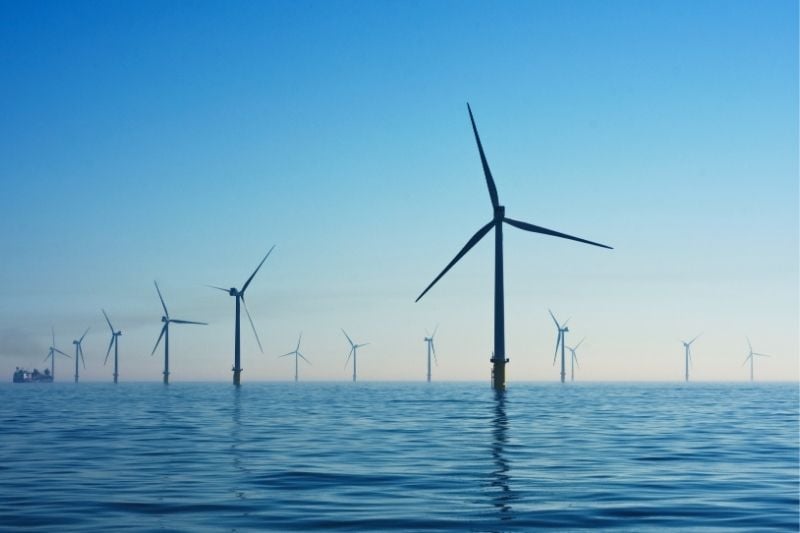The need to reduce waste and shift to a circular economy was a popular topic at the Rethink 2020 sustainability conference. Read on to discover why it’s worth your attention.
Take, Make, Waste: that is the principle that governs the linear economy we function in today. While this mode of economy has served us well for generations, it also continues to be the reason behind our worsening environment. Its wasteful and extractive nature exploits and depletes our natural resources, as we battle biodiversity loss, plastic pollution, and overfarmed agricultural land, among others.
The pandemic revealed the brittleness of our system as supply chains were disrupted, retails across the world found themselves unstocked, and hospitals faced a dearth of medical equipment. At Rethink 2020, everyone from corporate leaders to strategic advisors echoed a similar sentiment – that a circular economy is the answer.
What is the Circular Economy?
“The linear economy is the problem; a circular economy is the solution.”
A circular economy is essentially a system in which no waste is produced because there is value to all things considered rubbish. Products can be repaired, repurposed, and recycled to help goods retain their value even after being discarded. Usage of renewable energy sources will be maximised and regeneration will be at the heart of the system.
If implemented on a global scale, by all sectors, we can expect the following surprising effects to occur in the decades to come:
1. Renewable energy can only eliminate 55% of greenhouse gases
Climate change has become an unignorable force to reckon with. This year especially has served as a constant reminder to all of us that not enough is being done towards reversing the damage we’ve caused. Global advocacy groups are leaving no stones unturned in their efforts to educate governments and corporates to do their fair share in environmental conservation.
Nicola Evans, Marketing Lead from the Ellen McArthur Foundation, believes that we are still nowhere near hitting most of the targets set in the Paris Agreement, despite governmental and private sectors stepping up their game to reduce carbon footprints and ongoing experimentation with renewable energy. “Our data showed that only 55% of greenhouse emissions can be eliminated through a full transition to renewable energy. And even with the nationally defined contributions, no one is talking about the remaining 45% of greenhouse gases.”
By moving towards a circular economy, we can increase our resilience to the effects of climate change. Repurposing our waste, keeping materials in use, and regenerating our farmlands for the next 30 decades will help reduce greenhouse emissions by 9.3 billion tonnes. “That’s equivalent to eliminating all current emissions from transport worldwide,” she explains.

2. Chinese households and firms can save CNY 17 trillion by 2040
“Profits made sustainable; sustainability made profitable.”
Industry leaders and academics have repeatedly honed in on the numerous benefits to be reaped from transitioning to a circular economy – and we’re not just talking environmentally.
Nicola is particularly interested in the positive strides China is making towards achieving circularity. With the country’s grand commitments to renewable energy production, rapid infrastructural development, and tech-savvy markets, she is optimistic about China becoming an incubator for scalable, circular solutions. By offsetting the costs from all its negative externalities, the Mainland stands to save CNY 17 trillion by 2040. However, China won’t be the only one benefiting from the change.
According to findings from the Ellen MacArthur Foundation:
- USD 700 million can be saved in annual material cost saving in the global fast-moving consumer goods industry
- USD 50 billion reduction in healthcare costs associated with the American food sector
- EUR 3,000 increase in annual disposable income for European households
- 47% reduction in traffic congestion in China
Business leaders have also begun to take note of this, with many starting to manage company-wide green lines and initiate conversations around sustainable supply chains and decarbonisation.
Michael McComb, VP of SAP Greater China, further elaborates on this phenomenon. “Companies who act now with big, bold, disruptive, and degenerative ambitions are going to be rewarded. Investors like BlackRock, among other activist investors, are outing companies which they see as making insufficient progress on climate-related risks and social issues.”
3. Not just resource-saving, it’s also about sustainable relationships
“One company’s waste is another company’s treasure.”
CEO of Aspire, Cameron McKenzie, opines that the effectiveness of the circular economy lies in forming sustainable relationships between businesses, suppliers, and customers.
The basis of this idea is to establish a value chain, integrating supply chains of a number of businesses and/or subcontractors. By creating a communal network of companies, identifying the big players within that ecosystem is made easier. This allows for effective resource allocation and collaboration towards achieving shared long-term sustainability goals for all organisations involved.
A variety of innovative solutions exist that aim to connect businesses and mitigate the environmental impact of poor waste management practices. Cameron outlines how Aspire is one such firm that facilitates the transformation of organisations achieving a circular economy by posing as a matching service designed for these businesses to exchange or purchase resources that would otherwise be discarded. “Regardless of scale, organisations can start their transition towards a circular economy while unlocking ways to save costs on waste disposal, and potentially earn revenue from selling existing waste.”

4. It’s not a one-size-fits-all model
Cameron highlights the need for a multi-perspective framework when designing solutions to incorporate circularity into processes – especially on a city level. “We need to understand what the context is and how it’s changing. By accounting for landscape influences and local policies, a better picture of how to employ solutions for that particular ecosystem can be drawn.”
He explains that understanding the regime and structures of the government and businesses that operate within the city is equally important to understand so that the best elements can be leveraged upon to facilitate a smoother transition.
“By leveraging Hong Kong’s strengths – infrastructure, trade, transport, and finance – we can make rapid progress towards the circular economy. Imagine a circular Hong Kong built to be modular and flexible so that space can be used in different ways. Imagine buildings that are designed to generate and not just use energy. Money being invested into the businesses, innovators, and infrastructure to help support different sectors of the city – the opportunities are huge,” stresses Cameron.
Wrapping Up
When Covid-19 raised the curtain on the inefficiencies within the linear economy, the need to adopt circularity into our processes and systems became more imminent than ever. With the scale of economic opportunities that will be made available from the transition, organisations will surely benefit from implementing a circular economic strategy at the heart of their operations.
Related Articles
4 Sustainable Business Strategies to Increase Your Firm’s Competitiveness
Chris Brown: Rethinking Corporate Sustainability in Hong Kong
Distinctive Action: The Sustainability Startup Reducing HK’s Plastic Waste





